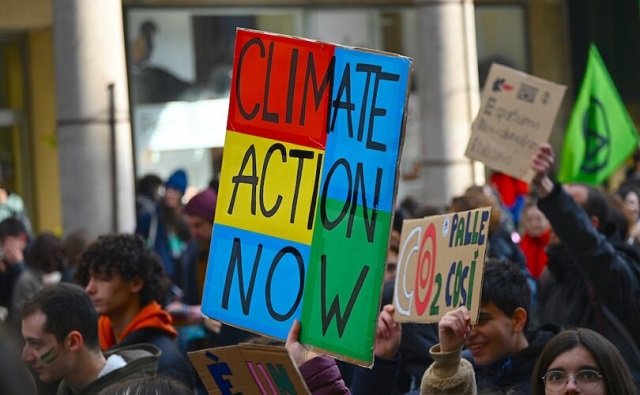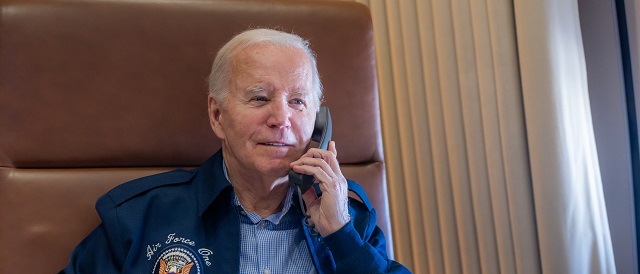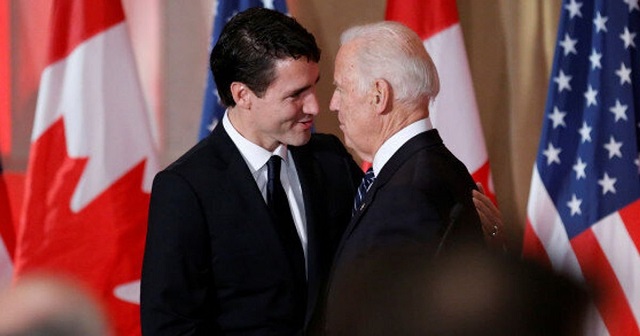Opinion
The Climate-Alarmist Movement Has A Big PR Problem On Its Hands

 From the Daily Caller News Foundation
From the Daily Caller News Foundation
By David Blackmon
The whole “net-zero by 2050” narrative that cranked up in earnest in early 2021 has now become a public relations problem for the climate-alarm movement, according to a senior official at the United Nations.
Chris Stark, the outgoing chief executive of the UN’s Climate Change Committee (CCC), said as reported by the Guardian: “Net zero has definitely become a slogan that I feel occasionally is now unhelpful, because it’s so associated with the campaigns against it. That wasn’t something I expected.”
As seems to always be the case among the globalist sponsors of this government-subsidized rush to saddle the world with unreliable power grids and short-range electric cars, the conversation among the leaders of the movement immediately moves not to perhaps reconsidering the approach to address public concerns, but to rejiggering the narrative. Stark recommends shifting the label and the narrative to more of a focus on investment and how renewables and EVs somehow improve energy security.
“We are talking about cleaning up the economy and making it more productive – you can call that anything you like,” he said.
That would be a neat trick, inventing a narrative about benefits that don’t really exist. But it wouldn’t be the first time it’s been tried.
At last November’s COP 28 conference, UN Secretary General Antonio Guterres floated the term “climate collapse” as a new name for what the climate alarmists have successively called “global warming,” “climate change,” “climate crisis,” and “climate emergency.” Each successive label has been replaced as its cache’ with the public has faded; and apparently the whole “climate emergency” has lost its punch, so another fright narrative must be concocted.
The trouble there, of course, is that the climate is not collapsing. But then again, it isn’t in any sort of an emergency, either, or a crisis.
The climate is always changing, though, so at least the long-abandoned “climate change” label had the ring of truth to it. Maybe let’s go back to that and try to deal with something that is at least a real thing? But, no, that would cut down on the alarm and make it harder for political leaders to enact bad “solutions” and subsidize them with debt combined with skyrocketing utility bills for average citizens.
So, as Stark says, call it anything you want, just so long as it is alarming. Stark’s boss at the UN, Guterres, used the term “global boiling” to describe the current climate situation. So, maybe we change “net-zero by 2050” to “no bubbles by 2050.” That would at least have the advantage of some semblance of consistent thought.
A colleague suggested that we simply change the problematic label to “Stone Age,” since that is where we are heading if the alarmists continue to get their way. She has a point.
The most amazing thing about Stark’s concerns is that anyone is really surprised that “net-zero by 2050” has become a problematic term. How else would officials at the UN and other governments expect the public to react to what has become the umbrella label for a set of authoritarian government actions that have destabilized power grids, caused the cost of living to rise rapidly, reduced consumer choice, and begun to rob citizens in nominally “free” countries of their individual rights?
The central problem today with this climate change narrative is that it has gone on for so long that is has become a bit of a joke with an increasingly aware and skeptical public. And the reason they’re skeptical is not due to any disbelief in science, as the alarmists invariably claim, but because they have seen nothing but bad outcomes and personal deprivations from the alleged solutions being subsidized into existence.
Stark assures us that, “the lifestyle change that goes with this is not enormous at all,” but painful results to date tell another story.
If Stark were truly thoughtful and serious about wanting to deal with the increasing unpopularity of the “net-zero by 2050” construct, he would suggest that everyone take a step back and re-evaluate the nature and effectiveness of the solutions being pushed.
By merely advocating for the concoction of yet another shift in the narrative, a troublesome lack of sincerity is laid bare.
David Blackmon is an energy writer and consultant based in Texas. He spent 40 years in the oil and gas business, where he specialized in public policy and communications.
conflict
America Is Really Bad At Foreign Interventions. Why Does Biden Think Ukraine Will Be Any Different?

 From the Daily Caller News Foundation
From the Daily Caller News Foundation
One of the very first operations undertaken by the Central Intelligence Agency (CIA) after its founding in 1947 was to create an army to fight the Soviets in Ukraine. Dubbed Operation Nightingale, the CIA aimed to reconstitute Nazi death squads in Ukraine that the Germans called Nachtigall.
The newly created U.S. intelligence community figured we’d partnered with communists to destroy fascism. Now, post war, we could team with the fascists to destroy communism.
Unsurprisingly, Nightingale was a spectacular failure. The Kremlin’s spies discovered every aspect of the plan well before it was initiated.
In its early years, the CIA lurched from one fiasco to another. On Sept. 20, 1949, CIA analysts declared the Soviet Union would not produce a nuclear weapon for at least another four years. Three days later, Truman had to tell the country that Russia had the bomb.
Sadly, things are hardly better today.
In 2021, U.S. intelligence agencies looked into their crystal ball and told senior congressional leaders that Afghanistan’s national security forces could keep the Taliban at bay for a year or perhaps longer. The Taliban took Kabul in a matter of hours.
“Clearly we didn’t get things right” on that intelligence, National Security Council spokesman John Kirby dryly remarked later.
The next year, U.S. intelligence took the opposite tack on Ukraine, predicting the capital, Kiev, might fall within days of Russia’s 2022 invasion. Two years in, Kiev is still in the Ukraine column.
Bonehead analysts even offered to evacuate Volodymyr Zelensky — evidently having learned nothing from the disastrous U.S. evacuation of Afghan President Ashraf Ghani.
What did they get right? Avril Haynes, the Director of National Intelligence, applauded her agency for correctly predicting that Russia planned to invade Ukraine. “We assess President Putin is prepared for prolonged conflict,” she testified in May 2022. You don’t say? The 100,000 troops Putin amassed on Ukraine’s border were likely a helpful clue.
Many in our intelligence community scoffed at Putin’s criticism of America’s heavy hand in Ukraine. Those who dared point out that the CIA had injected former Nazis into Ukraine after World War II were labeled stooges of Russian disinformation. They’d prefer we not recall the U.S.’s more provocative recent history in Ukraine, much of it based on bad American intelligence.
During Ukraine’s Maidan demonstrations in 2013, U.S. officials, including then-Vice President Joe Biden, saw an opportunity to fulfill the predictions of President Jimmy Carter’s national security advisor, Zbigniew Brzezinski, who postulated that “without Ukraine, Russia ceases to be a Eurasian empire.”
By pulling Ukraine closer to Europe, NATO and the U.S., they reasoned we could de-claw the Russian bear. Thus, the U.S. supported ousting the democratically-elected Ukraine president, Viktor Yanukovych. Victoria Nuland, Obama’s Assistant Secretary of State for European and Eurasian Affairs, boasted that the United States had “invested” $5 billion to build Ukraine’s credentials to join the European Union.
She passed out actual cookies during the coup. Nuland was later caught on tape plotting who would be Ukraine’s post-coup president and getting Joe Biden to give an “attaboy” that would “F**k the EU” for not being aggressive enough with Moscow.
On cue, Biden endorsed Ukraine’s uprising: “Nothing would have greater impact for securing our interests.” Yanukovych was ousted and in the months that followed, Nuland pushed the U.S. to arm Ukraine and carefully crafted the media message, “I would like to urge you to use the word ‘defensive system’ to describe what we would be delivering against Putin’s offensive systems.”
If Nuland’s regime-change playbook sounds familiar, stop a moment and ponder that her resume also includes serving as Vice President Dick Cheney’s principal deputy national security advisor. Her husband, Robert Kagan, was among the chief proponents of America’s swell idea to bring democracy and stability to Iraq by toppling Saddam Hussein.
Other U.S. players meddled in Ukraine as well. On April 12th, 2014, CIA Director John Brennan secretly visited Ukraine, kicking off a new covert war with Russia. In a recent report by The New York Times, turns out the CIA has operated a dozen secret bases in Ukraine since his visit. Little wonder Brennan feared a Trump victory.
Trump’s surprising win in 2016 undermined all this maneuvering. “I really hope that you and President Putin can get together and solve your problem,” Trump told Zelenskyy. “That would be a tremendous achievement.” Trump lowered the temperature, but pausing weapons delivery to Ukraine became the root cause of his first impeachment.
Within six weeks of taking office, the Biden administration cranked up aid to Ukraine, delivering $125 million in March 2021. As of two weeks ago, that figure now tops $185 billion.
America holds a long list of failed interventions based on bad intelligence: Afghanistan, Libya, Iraq, Panama, Haiti, Serbia, Grenada, Iran, South Vietnam, Congo, Cuba, Guatemala, Albania and the Dominican Republic, among others.
It doesn’t take an intelligence genius to predict the ultimate outcome of our latest dalliance in Ukraine.
Morgan Murphy is a former DoD press secretary, national security adviser in the U.S. Senate, a veteran of Afghanistan.
The views and opinions expressed in this commentary are those of the author and do not reflect the official position of the Daily Caller News Foundation.
Fraser Institute
Trudeau and Ford should attach personal fortunes to EV corporate welfare

From the Fraser Institute
By Jason Clemens and Tegan Hill
Last week, with their latest tranche of corporate welfare for the electric vehicle (EV) sector, the Trudeau and Ford governments announced a $5.0 billion subsidy for Honda to help build an EV battery plant and ultimately manufacture EVs in Ontario. Here’s a challenge: if politicians in both governments truly believe these measures are in the public interest, they should tie their personal fortunes with the outcomes of these subsidies (a.k.a. corporate welfare).
One of the major challenges with corporate welfare is the horrendous economic incentives. The politicians and bureaucrats who distribute corporate welfare have no vested financial interest in the outcome of the program. Whether these programs are spectacularly successful (or more likely spectacular failures), the politicians and bureaucrats experience no direct financial gain or loss. Simply put, they’re investing taxpayer money, not their own.
Put differently, the discipline imposed on investors in private markets, such as the risk of losing money or even going out of business, is wholly absent in the government sector. Indeed, the history of corporate welfare in Canada, at both the federal and provincial levels, is rife with abject failures due in large measure to the absence of this investing discipline.
In the last 12 months in Ontario, automakers have been major beneficiaries of corporate welfare. The $5.0 billion for Honda is on top of $13.2 billion to Volkswagen and $15.0 billion to Stellantis. That equates to roughly $979 per taxpayer nationally for federal subsidies and an additional $1,372 for Ontario taxpayers. And these figures do not include the debt interest costs that will be incurred as both governments are borrowing money to finance the subsidies.
And there’s legitimate reason to be skeptical already of the potential success of these largescale industrial interventions by the federal (Liberal) and Ontario (Conservative) governments. EV sales in both Canada and the United States have not grown as expected by governments despite purchase subsidies. Disappointing EV sales have led several auto manufacturers including Toyota and Ford to scale-back their EV production plans.
There are also real concerns about the practical ability of EV manufacturers to secure required materials. Consider the minerals needed for EV batteries. According to a recent study, 388 new mines—including 50 lithium mines, 60 nickel mines and 17 cobalt mines—would be required by 2030 to meet EV adoption commitments by various governments. For perspective, there were a total of 340 metal mines operating across Canada and the U.S. in 2021. The massive task of finding, constructing and developing this level of new mines seems impractical and unattainable, meaning that EV plants being built now will struggle to secure needed inputs. Indeed, depending on the type of mine, it takes anywhere from six to 18 years to develop.
Which brings us back to the Trudeau and Ford governments. Given the economic incentive problems and practical challenges to a large-scale transition to EVs, would members of the Trudeau and Ford governments—including the prime minister and premier—want to attach a portion of their personal pensions to the success of these corporate welfare programs?
More specifically, assume an arrangement whereby those politicians would share the benefits of the program’s success but also share any losses through the value of their pensions. If the programs work as marketed, the politicians would enjoy higher valued pensions. But if the programs disappoint or even fail, their pensions would be reduced or even cancelled. Would these politicians still support billions in corporate handouts if their personal financial wellbeing was tied to the outcomes?
As the funding of private companies to develop the EV sector in Ontario continues with the support of taxpayer subsidies, Ontarians and all Canadians should consider the misalignment of economic incentives underpinning these subsidies and the practical challenges to the success of this industrial intervention.
Authors:
-

 Automotive2 days ago
Automotive2 days agoVehicle monitoring software could soon use ‘kill switch’ under the guise of ‘safety’
-

 Energy2 days ago
Energy2 days agoNet Zero’s days are numbered? Why Europeans are souring on the climate agenda
-

 Bruce Dowbiggin2 days ago
Bruce Dowbiggin2 days agoIt Gets Late Early These Days: Time To Bounce Biden & Trudeau?
-

 Opinion2 days ago
Opinion2 days agoClimate Murder? Media Picks Up Novel Legal Theory Suggesting Big Oil Is Homicidal
-

 Environment2 days ago
Environment2 days agoClimate Alarmists Want To Fight The Sun. What Could Possibly Go Wrong?
-

 Economy2 days ago
Economy2 days agoYoung Canadians are putting off having a family due to rising cost of living, survey finds
-

 Business2 days ago
Business2 days agoWhen politicians gamble, taxpayers lose
-

 Addictions2 days ago
Addictions2 days agoCity of Toronto asks Trudeau gov’t to decriminalize hard drugs despite policy’s failure in BC









